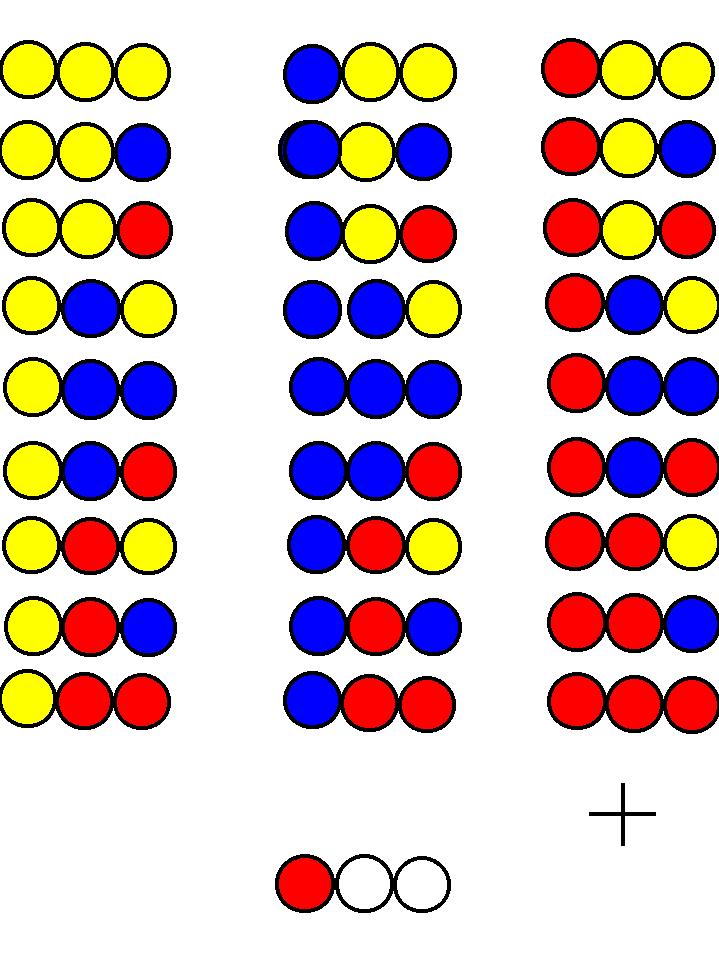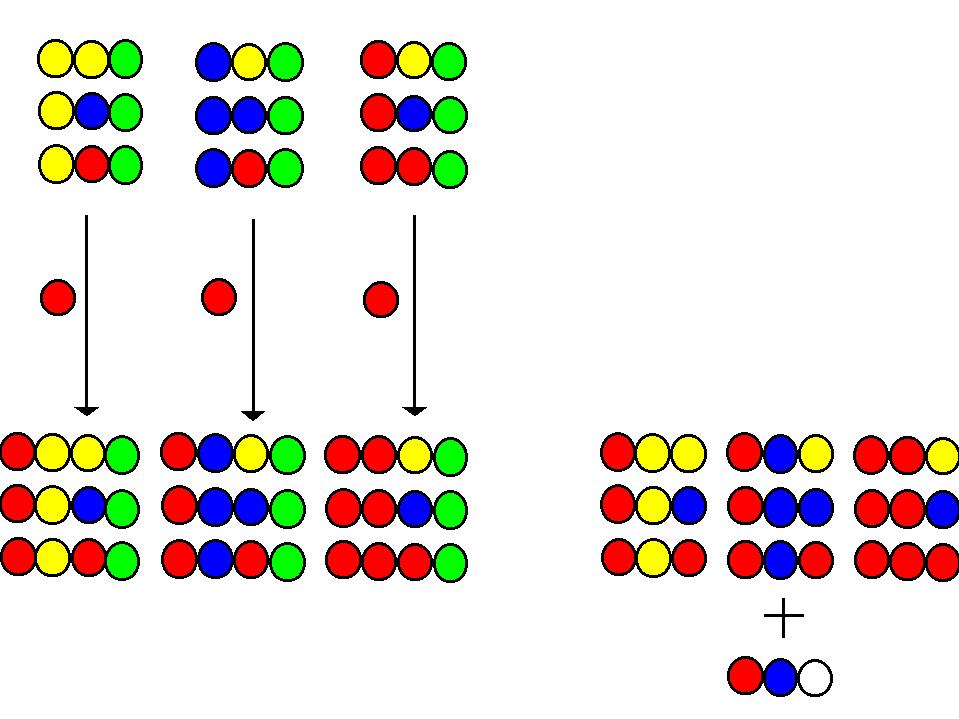Determination of the amino acid sequence
of the bioactive peptide the tripeptide library
The Iteration Strategy
Determination of the amino acid sequence of bioactive components of soluble peptide libraries by combination of screening and synthesis
The principle of the iteration strategy was first described
under the name of "back searching" in the document notarized in 1982 then
it was published by Geysen et al. in 1986 and Houghten et al. in 1991.The
procedure is visualized by the synthesis and screening of a tripeptide
library of 27 components. The 27 trimers synthesized
from three different (yellow, blue and red) monomers (amino acids). Green
circles symbolize the solid support. Before mixing operations of the synthesis
samples are removed for later use. After the last coupling step the samples
are not mixed.
Synthesis in 3 coupling steps Samples
removed
Determination of the amino acid sequence
of the bioactive peptide the tripeptide library
Coupling position 3.After the last coupling cycle of the synthesis of the library, the samples are not mixed. They are cleaved and screened separately. The components of the three samples are differing only in the amino acid occupying coupling position 3 and this makes possible to identify the terminal residue of the active peptide. If, after cleavage, the sample marked by + shows activity in screening, it means, that the N-terminal amino acid is the “red” one. The other two amino acids are not yet known.

Sequence of active tripeptide
Coupling position 2. This “red” amino acid is then coupled to each of the three samples taken in the dipeptide stage of the synthesis before mixing. The products differ only in the amino acid occupying coupling position 2. The result of the screening experiment carried out after cleavage (marked by +), identifies this residue as the “blue” amino acid.
Coupling Testing after cleavage

Coupling position 1. By going back to the first stage of the synthesis and coupling to the three unmixed samples the already identified “blue” then the “red” amino acid, and screening after the cleavages, the C-terminal amino acid can be identified (yellow).
Couplings
Testing after cleavage